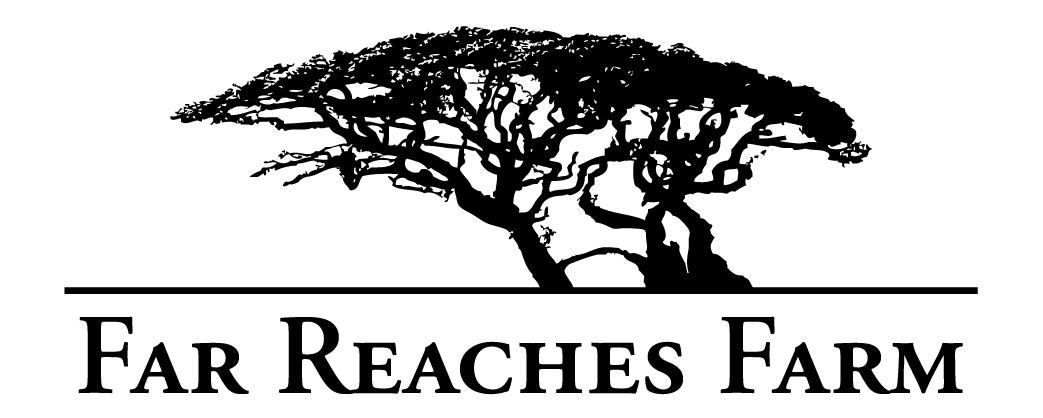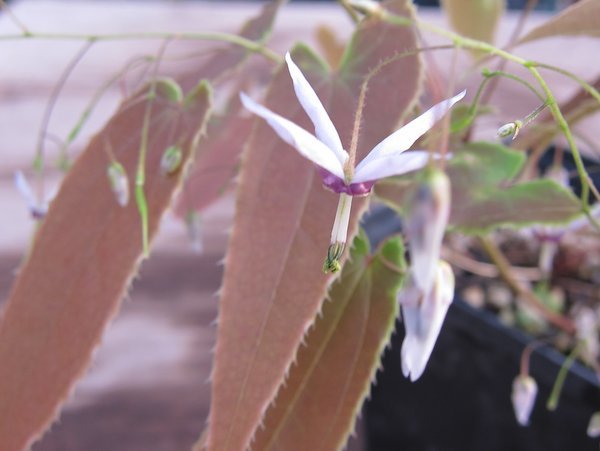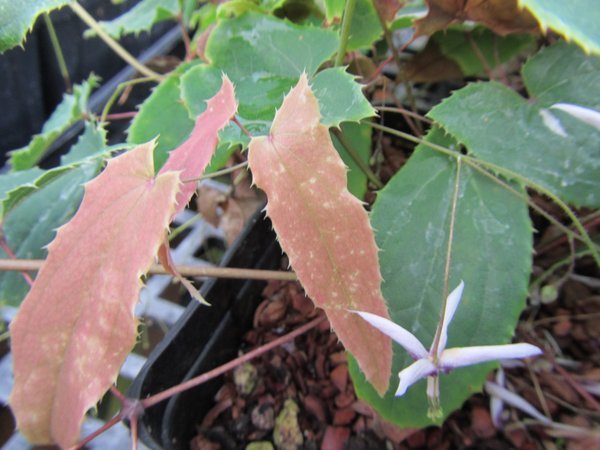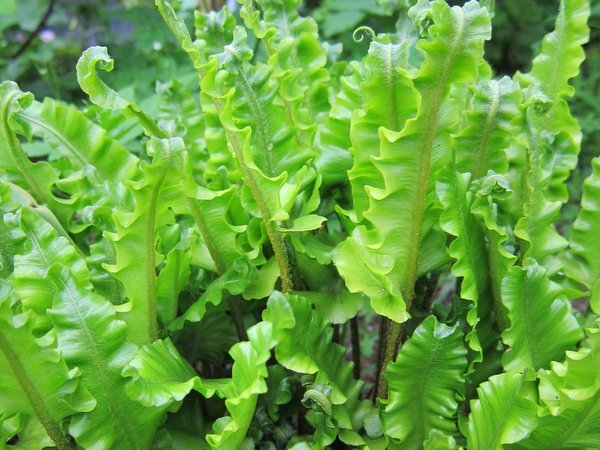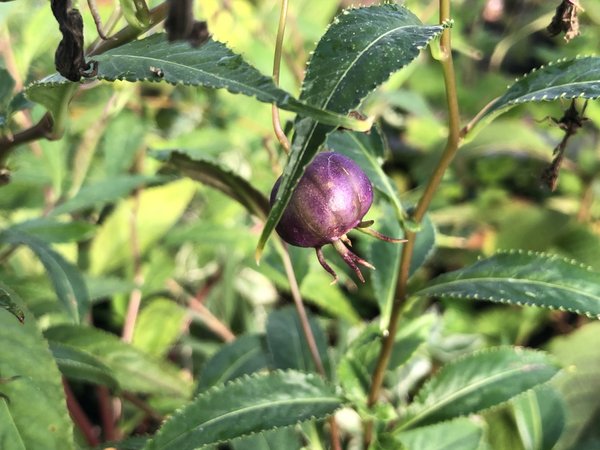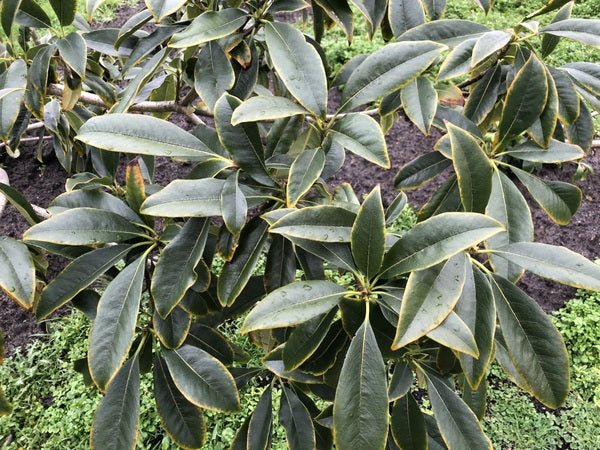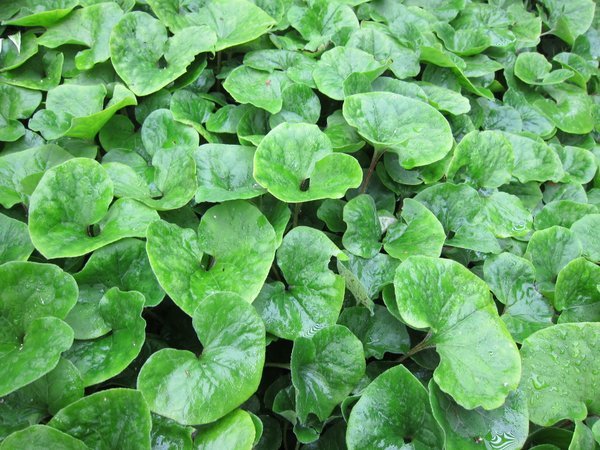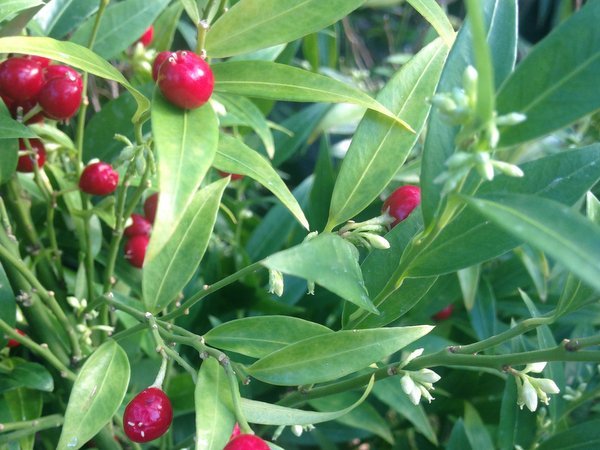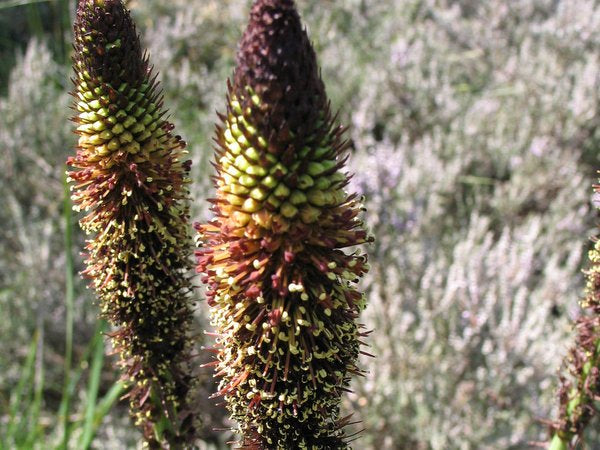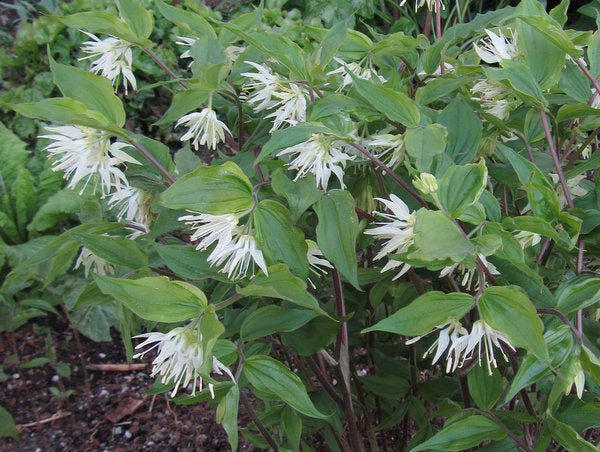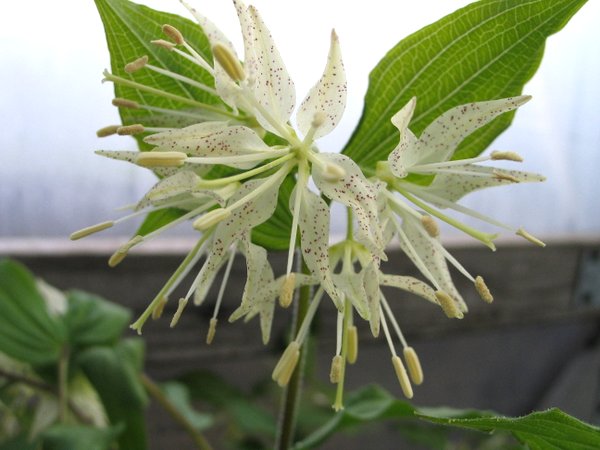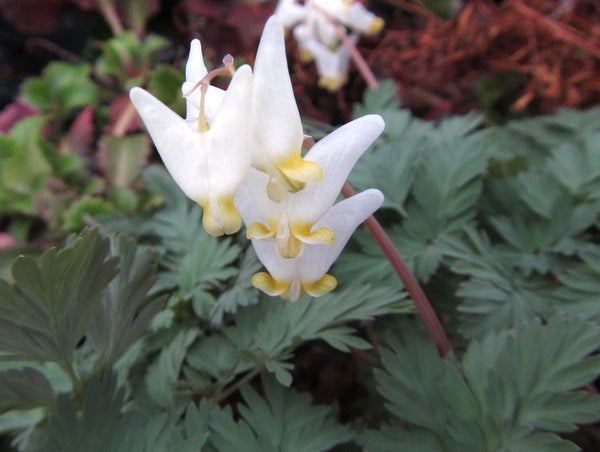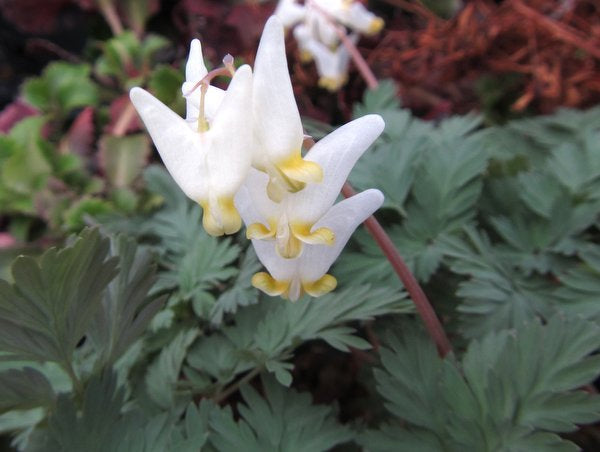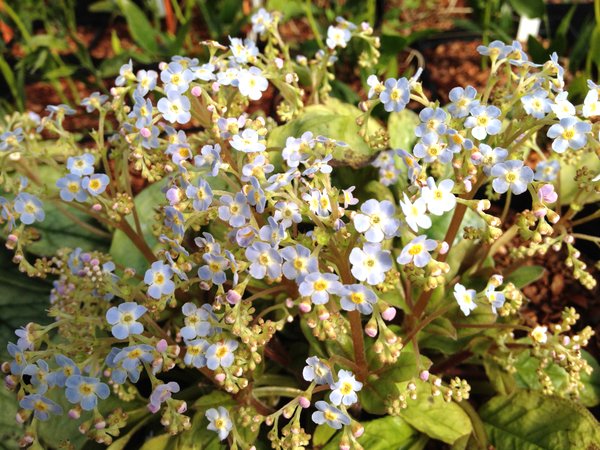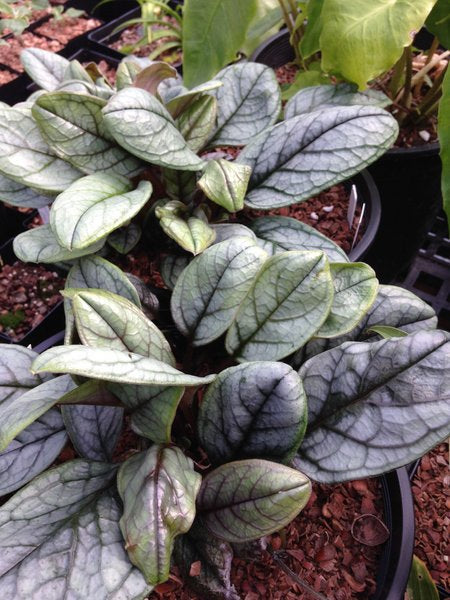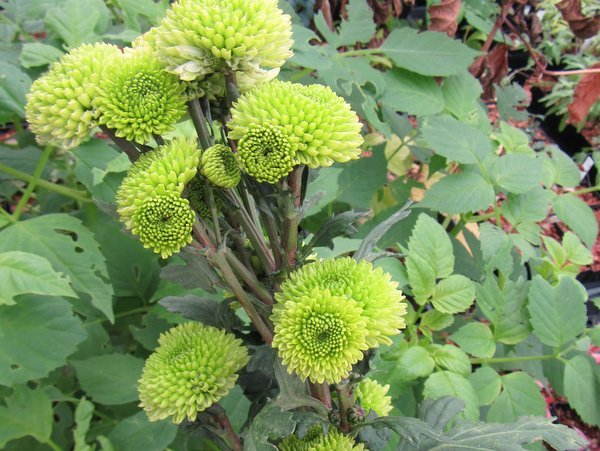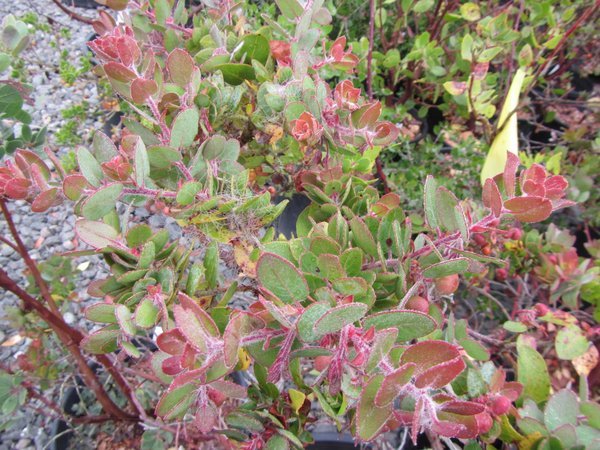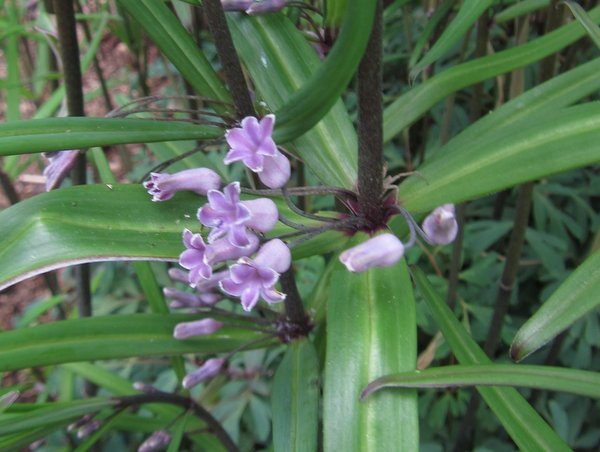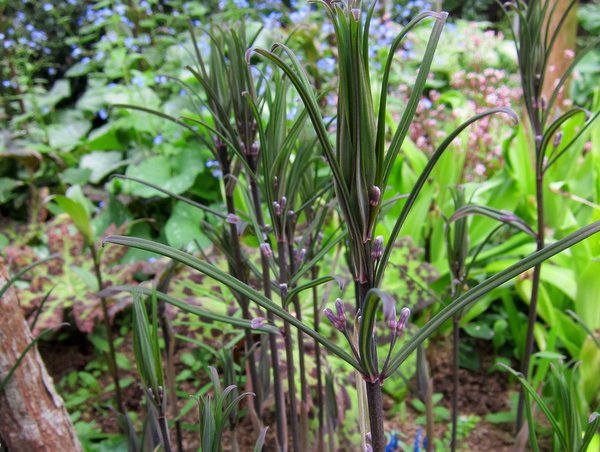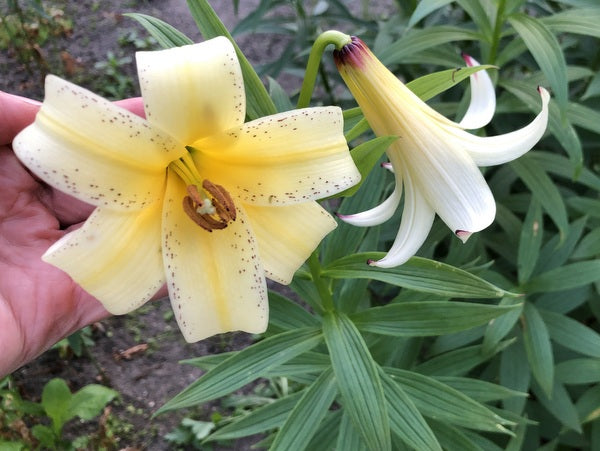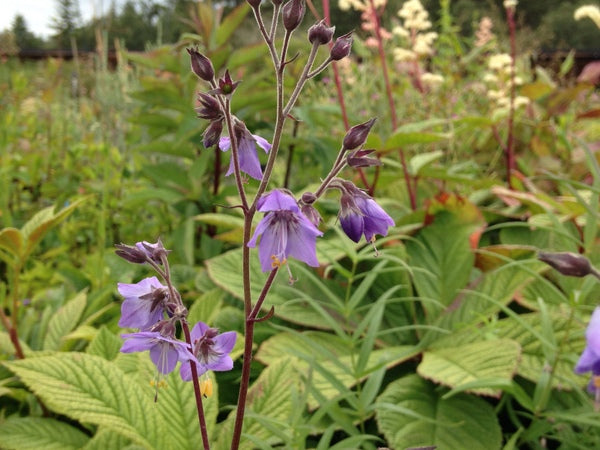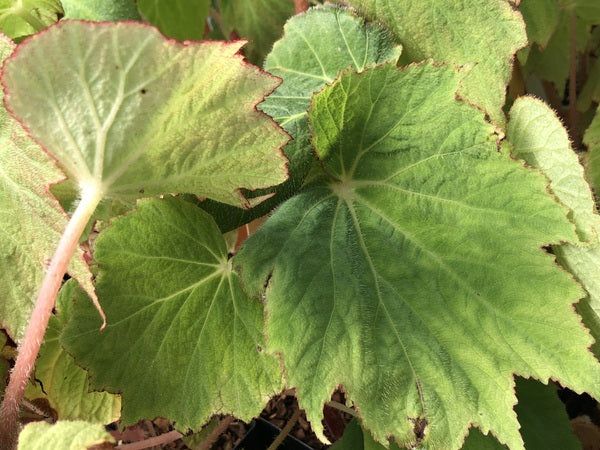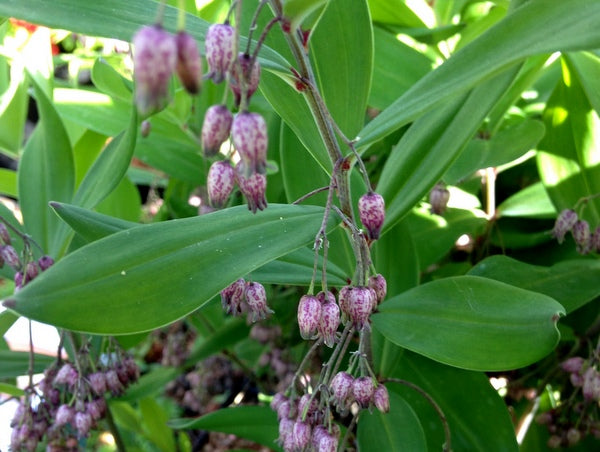Sort by:
1758 products
1758 products
Fairy Wings Epimedium or Bishop's Cap. This is one of the most elegant of the numerous species and cultivars of Epimedium with long blade-like leaflets nicely colored when young and white flowers like drifting parachutes in a Lilliputian fantasy. Hails from China and a necessary addition to the shade garden.
Hart's Tongue Fern. A distinctive fern whose undissected pale green leaves sets it apart from its allies. A tidy evergreen compact clumper to 16" tall by 20"+ across which is easy to please and goes so well with Trilliums and Arisaemas. This one doesn't mind some alkalinity and we have seen this self-sowing on damp brick walls where it enjoys the good drainage. And it is rabbit resistant which we appreciate.
Our collection of this triumphant Asian species which occurs in the Sino-Himalaya and is such a delight in the garden. This collection is from an adjacent area to the CGG14112 collection also listed and we expect these to be of similar high caliber when they reach flowering size. Rich, moist soil and plant shallow.
A collection by Philip MacDougall from Taiwan of this predominantly Chinese species. The pale flowers spring from the leaf axils of the arching stems and are just touched in pink and purple and will never be accoladed as showy but are charming. The reddish fruit are quite nice and dangle as showy little orbs. We have come to quite enjoy it's understated charms. This was once placed in the genus Pratia.
A Hinkley collection from Taiwan of this surprisingly tough broad-leafed evergreen shrub. We have planted it out in full exposure here in our heinous windy maritime steppe and it survives far better than it should having taken 10F. We should really be brought up on charges. We can imagine if being glorious in a more sheltered position where it can grow 10'-15' tall with rounded clusters of fragrant small yellow flowers.
Western Shooting Star. A pleasing western wildflower California to Alaska that one can't help but enjoy with its showy pinkish flowers with its strongly backswept petals. Likes it moist in spring and goes summer dormant when it gets drier. The taxonomic move of Dodecatheon to Primula nearly made us give up on plants and take up studying something stable and predictable like Constitutional checks and balances. These from a Ron Ratko collection.
A Roy Lancaster introduction of the variety chinensis from Yunnan, China (which in of itself, is reason enough to have this plant in the collection but then Roy is a hero to us so we're biased but not without reason) of an invaluable winter blooming shrub tolerant of deep shade with white fragrant flowers from late fall into early winter. Superb shade evergreen shrub.
Classic spring epehemeral of the eastern woodlands with ferny foliage in early spring and white flowers in March. This will go dormant by late spring and is an excellent little plant to grow on top of later growing shade loving lily species or Arisaemas so that you get double duty out of the same planting spot.
Collected by Hinkley from Emeishan as the species cavalieri, this Borage family member has riveting evergreen foliage washed in a gleaming silvery metallic overlay that is more than reason enough to grow this but OMG it has lovely flowers too which are white but touched in the palest blue. Gentle runners that makes a quiet patch. Ultra choice & rare, this has thrived in North Seattle for some years. Thanks to the generous and gifted Jeanette Kunnen for sharing. Full disclosure has some of these with minor slug nibbles on the leaves but we did not observe this happening in the garden - don't be dissuaded but we didn't want you surprised!
A startling addition to the cut flower palette with tight button pom-pom flowers of a very nice green. No doubt a mum judge will read this sometime and tell us the correct and accepted term to properly describe the flower shape but for now it is the tight button pom-pom. We were skeptical at first but then we saw it bloom and now we are converts. Thanks to Jim Fox for sharing with us and we won't doubt him again..
Arctostaphylos afficionados Paul and Greg at Xera Plants say this is their favorite Manzanita which made it a must-have for us. Fits in the home garden and tolerant of garden conditions, this get just 2' high by 4' across in time. Rocking reddish new growth turns to blue-green. Pink flowers late winter. Drought tolerant.
Young bulbs of this choice variable species from the Caucasus. Impressive displays of up to 24 scented creamy flowers whose reflexed tepals expose the soft yellow throat and fine maroon stippling in this form. This is a hardy early bloomer which is ideal for those cold northern gardens with short growing seasons.
From a 2012 collection in China by Goteborg Botanic Garden's three Henrik's including Henrik Zetterlund and his sense of humor is all over the expedition acronym. This is Polemonium chinense var. chinense based on the glabrous stems. Violet flowers, rarely white in late spring and early summer. We keep waiting for a white one.
Asian seed collection from an area denuded of woody plants for firewood and hungry small goats. This Begonia found a tenuous asylum between boulders. Light pink flowers and leaves covered in light red hairs and is a rhizomatous type suited for milder gardens in the PNW if mulched in winter. A portion of the proceeds goes to the Far Reaches Botanical Conservancy. This is a different collection from the OJ10-VN140 collection we offer.
Impish little species to a foot or so which looked unremarkable in the wild but blossomed - literally and figuratively - in the easy livin' at the nursery. Clusters of small white bells heavily marked in magenta dangle from long pedicels at the base of each leaf which is likewise fetchingly daubed in a small spot of bright maroon. A Far Reaches Botanical Conservancy Offering. Graceful and attractive.
